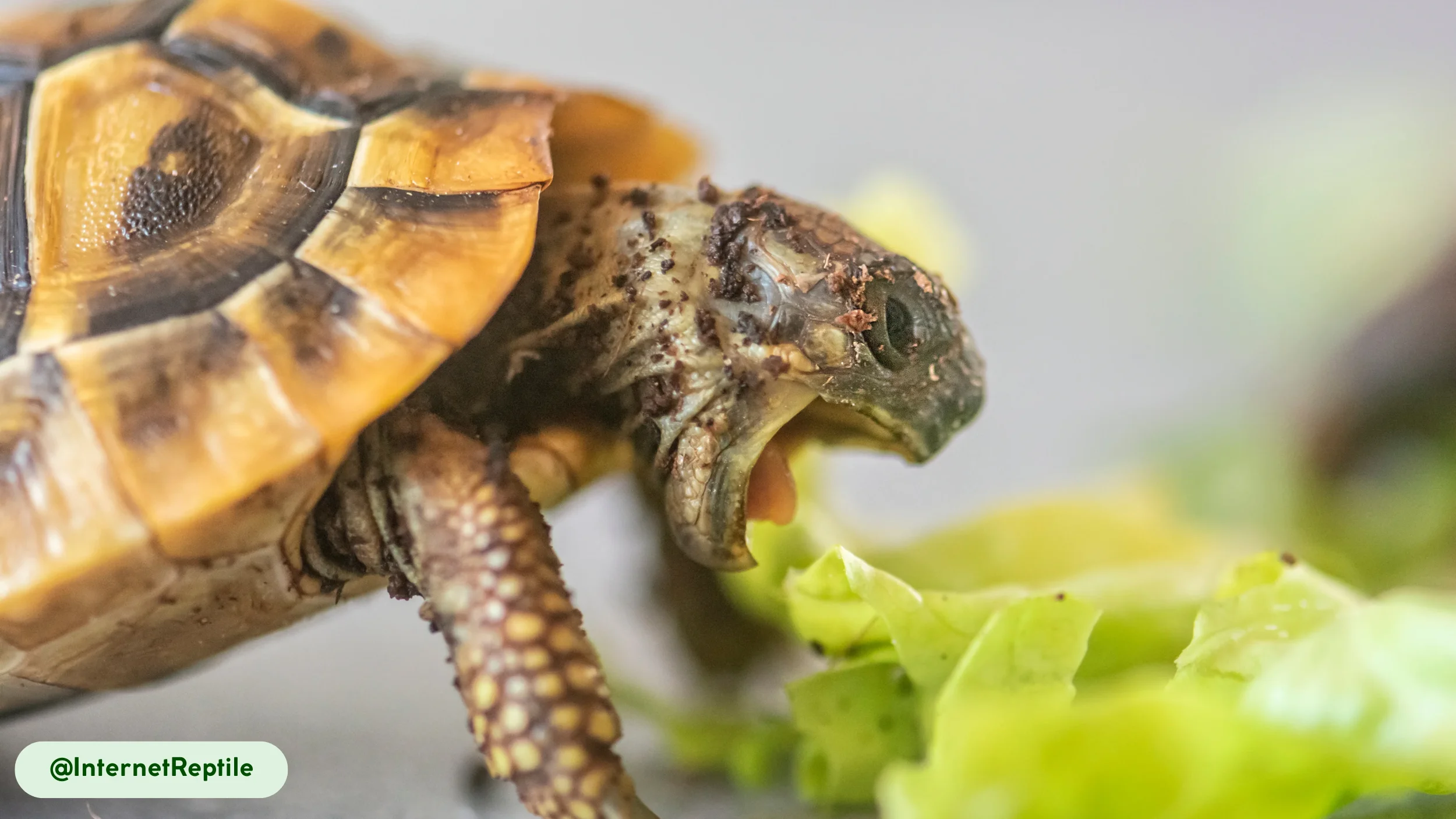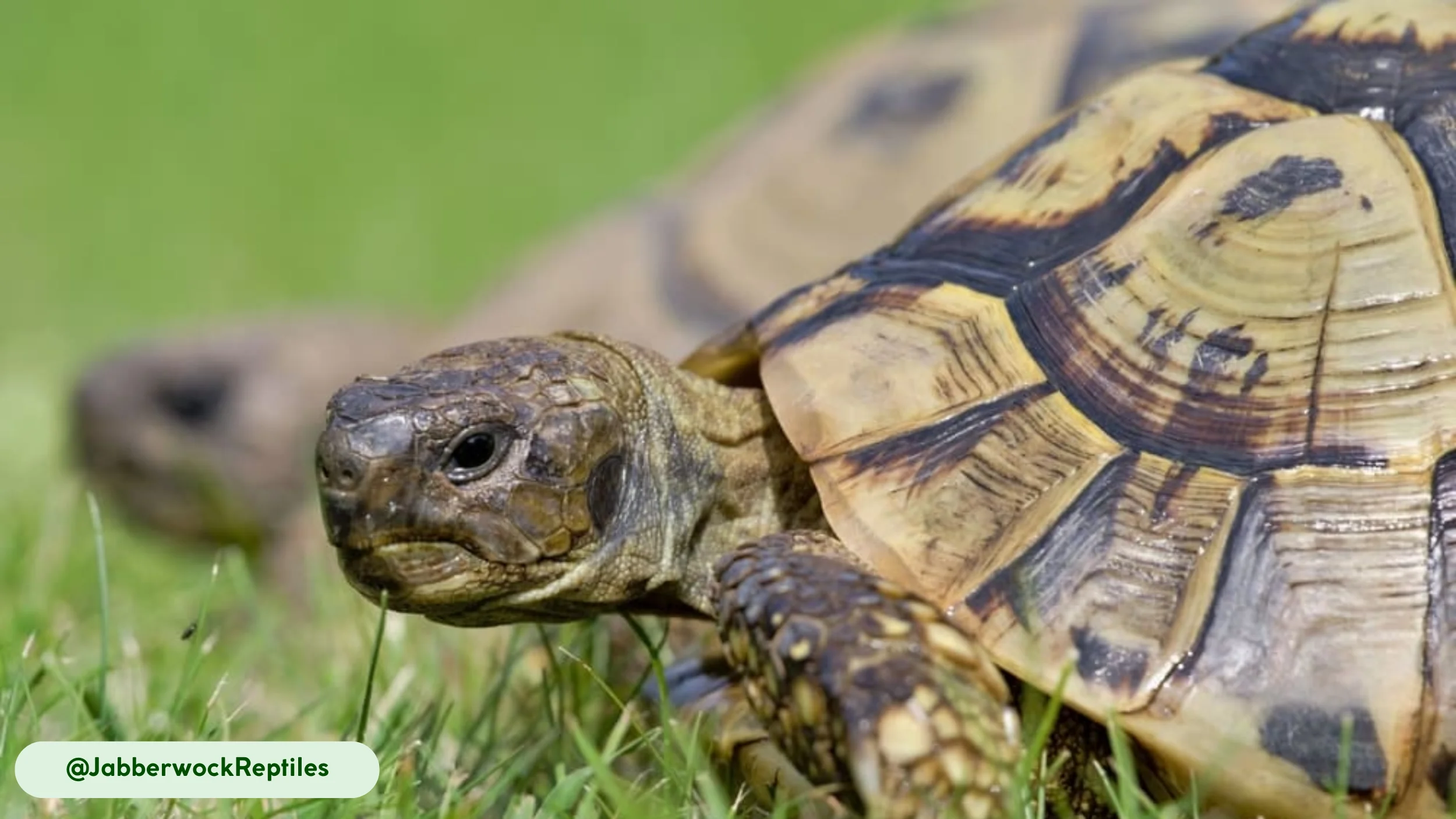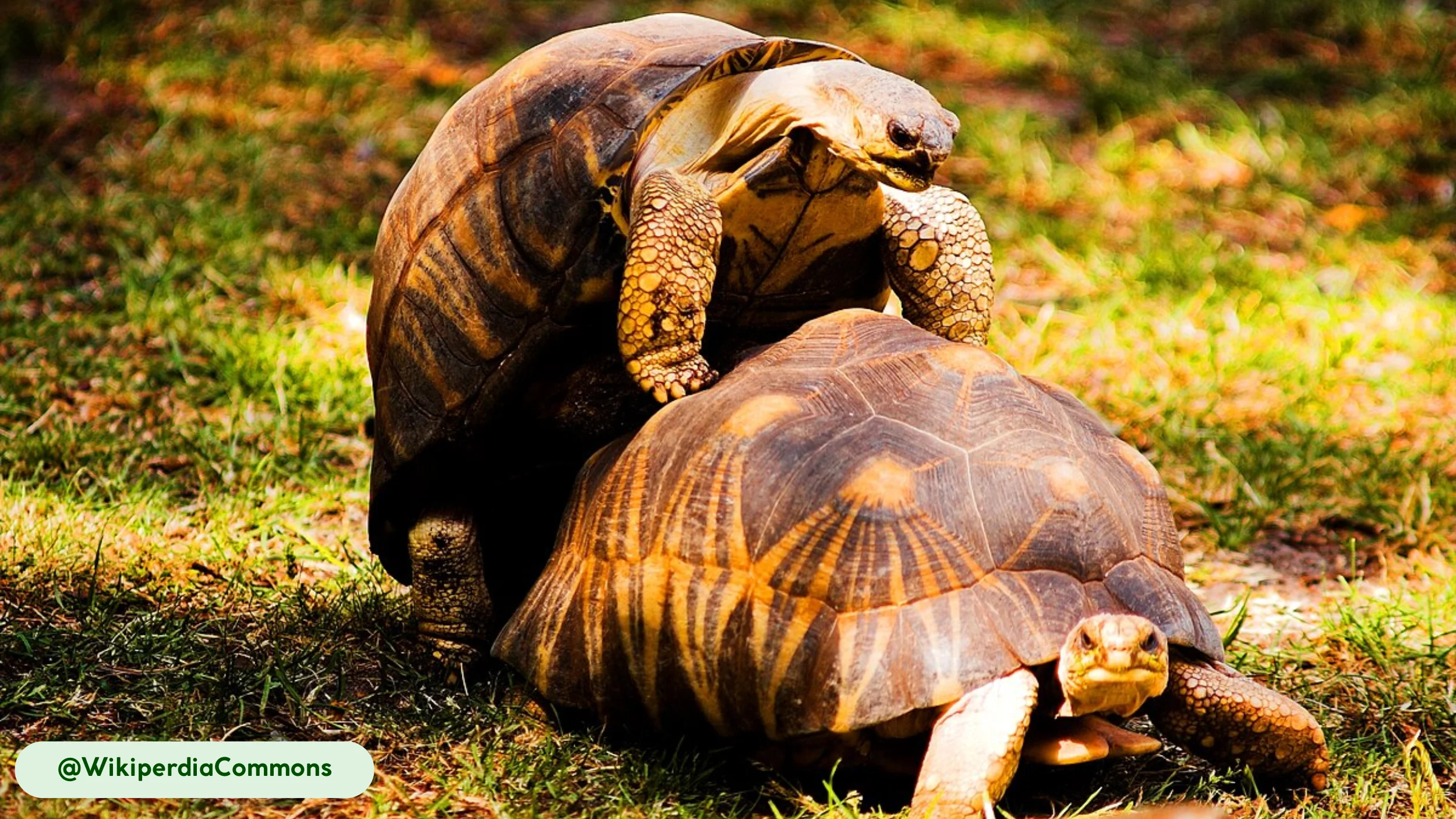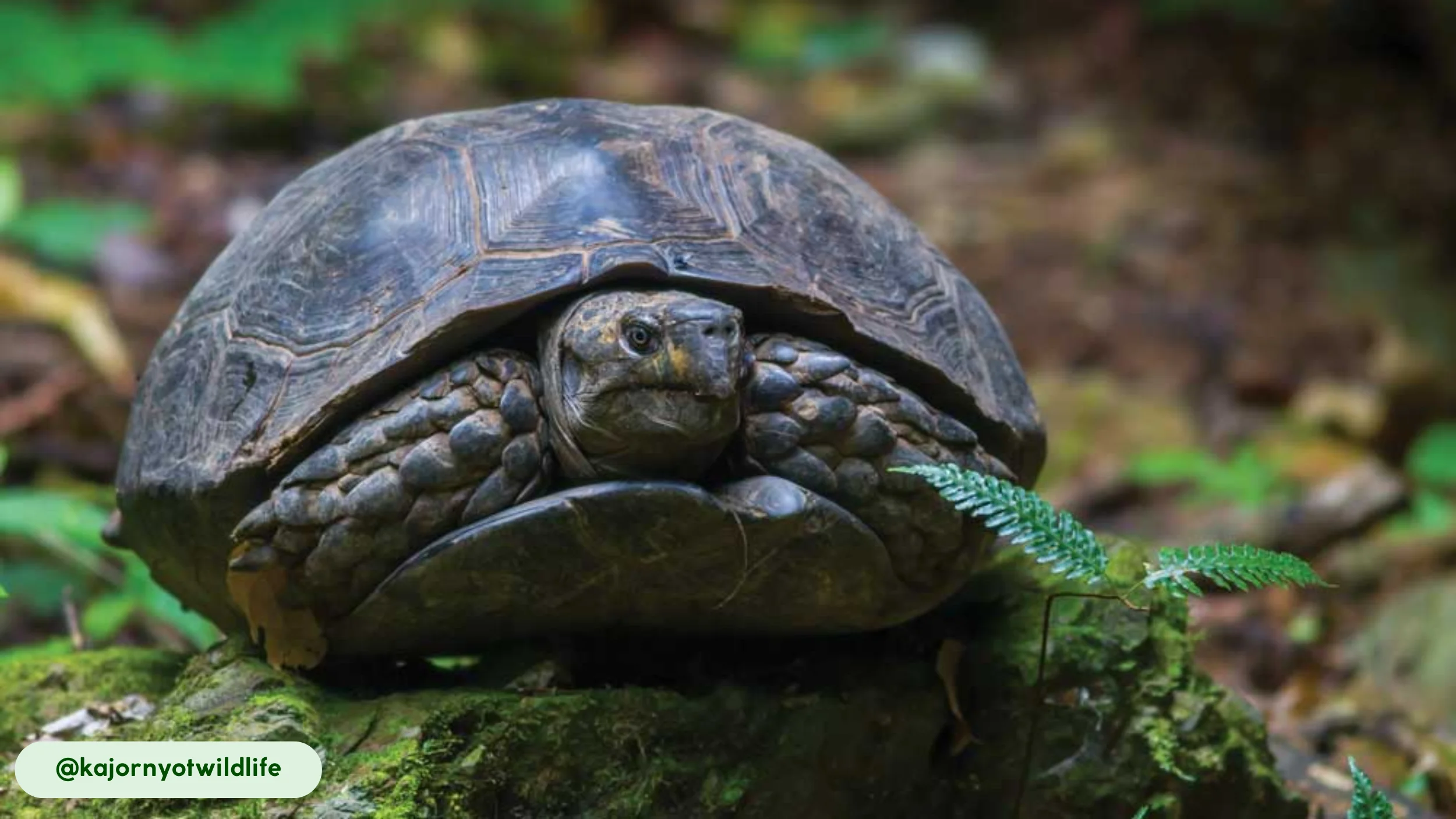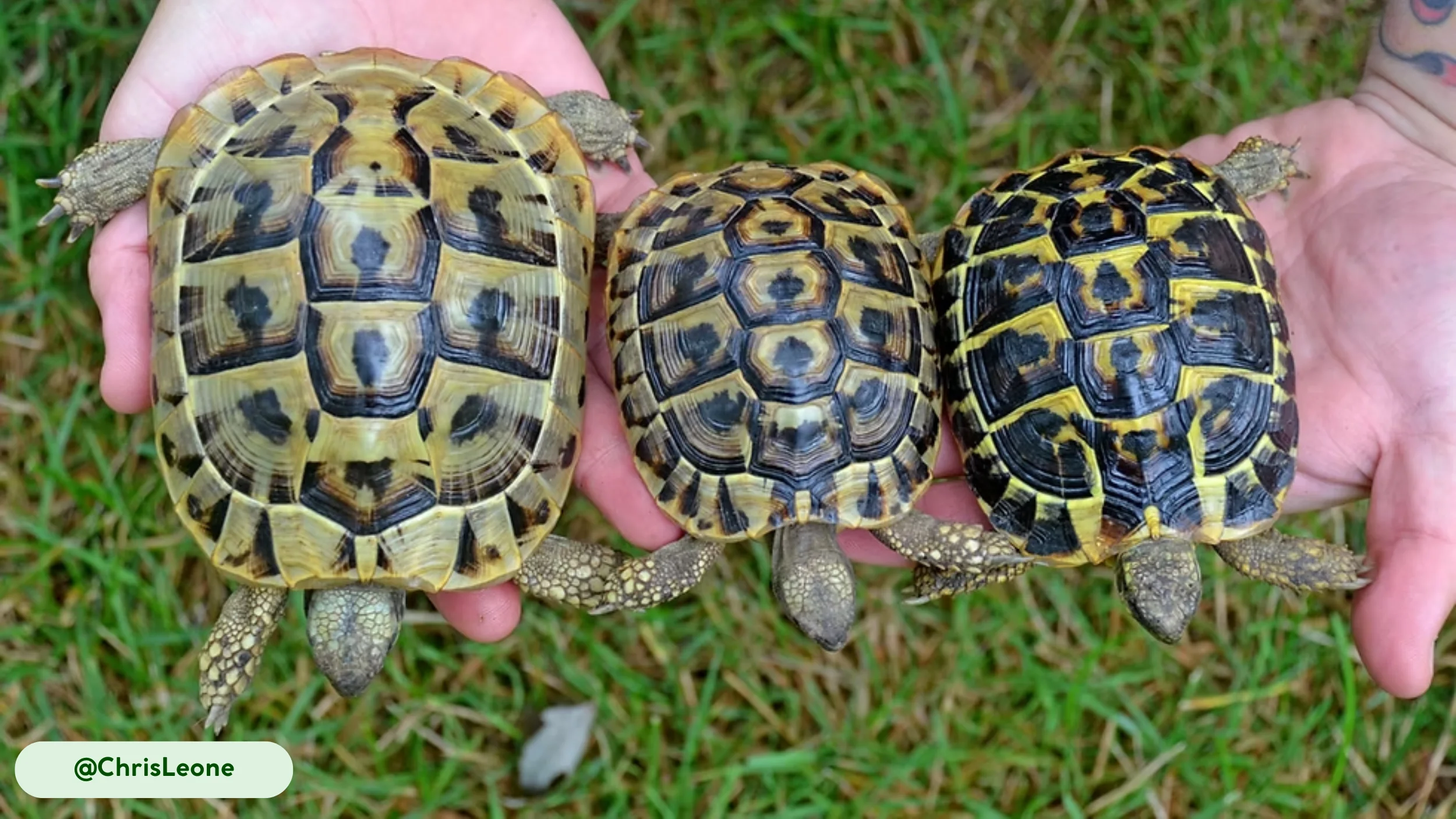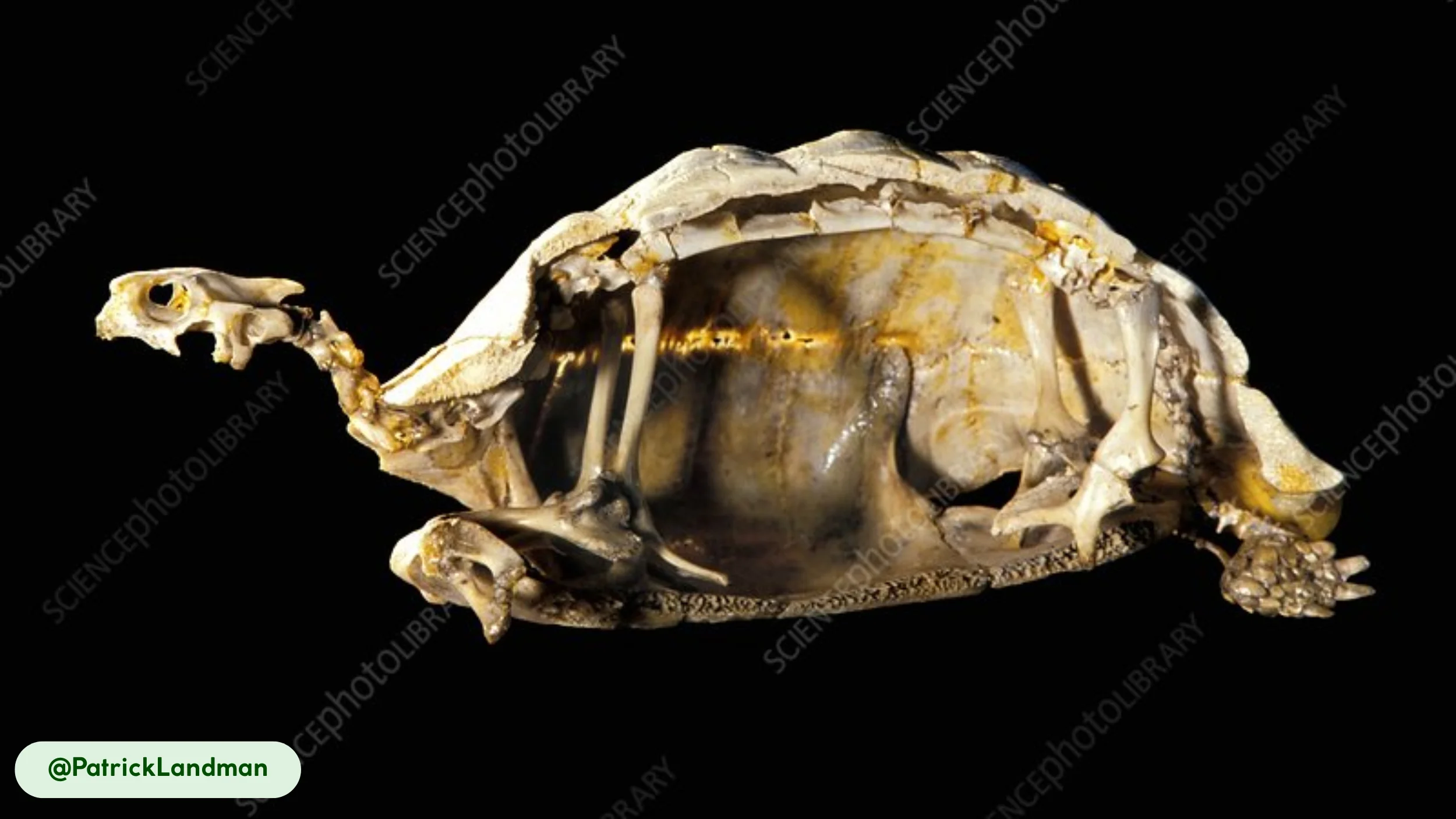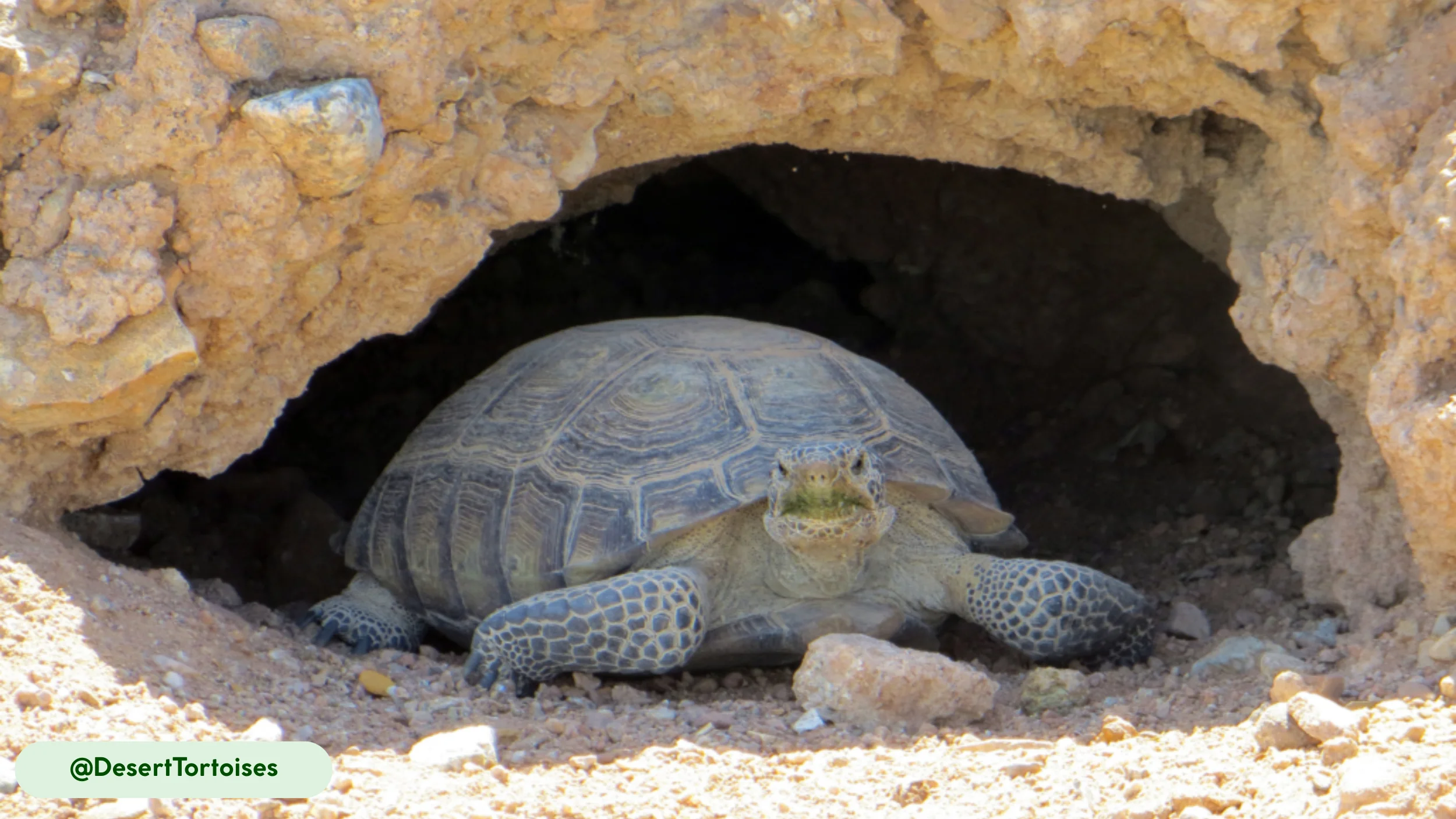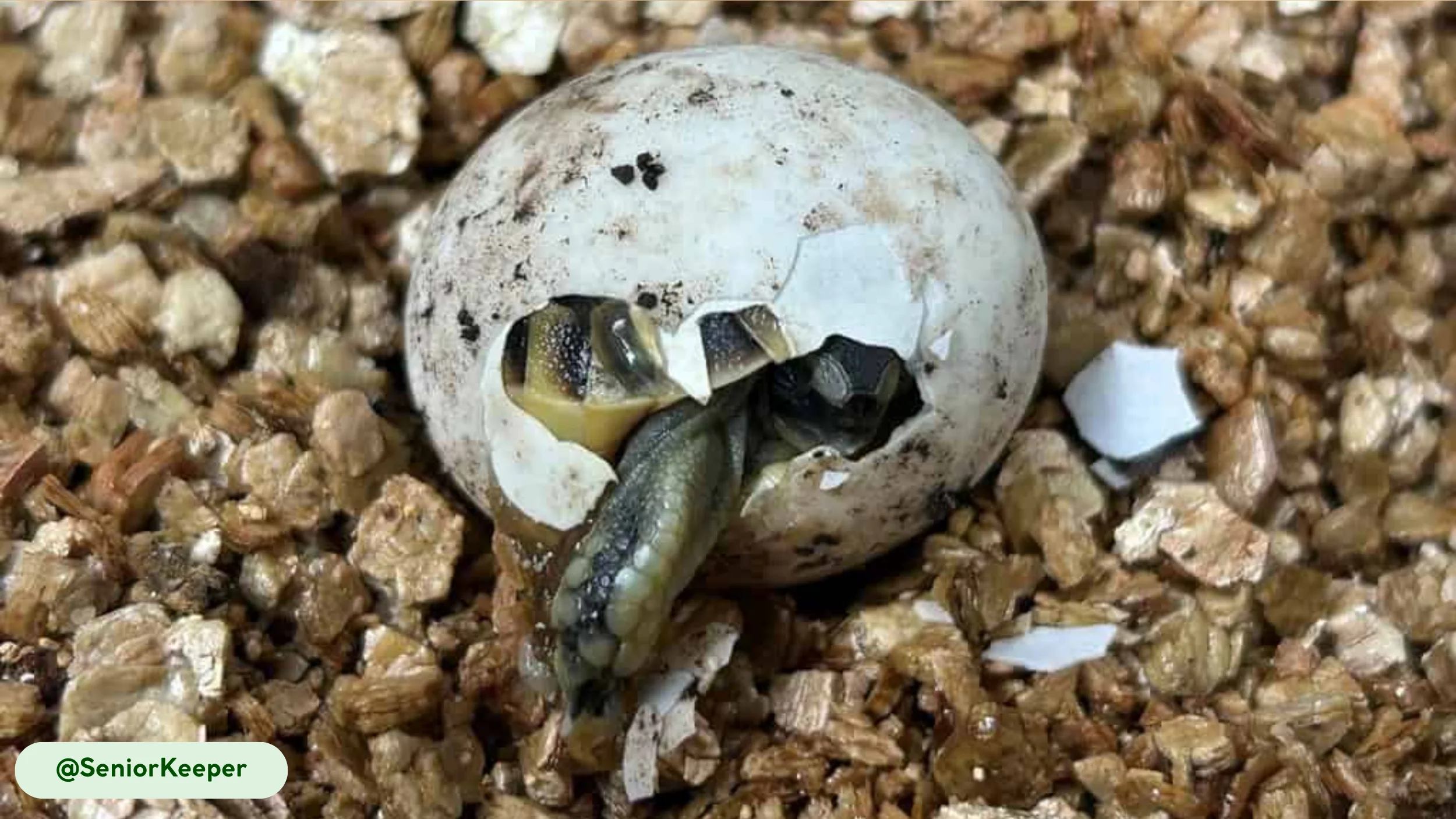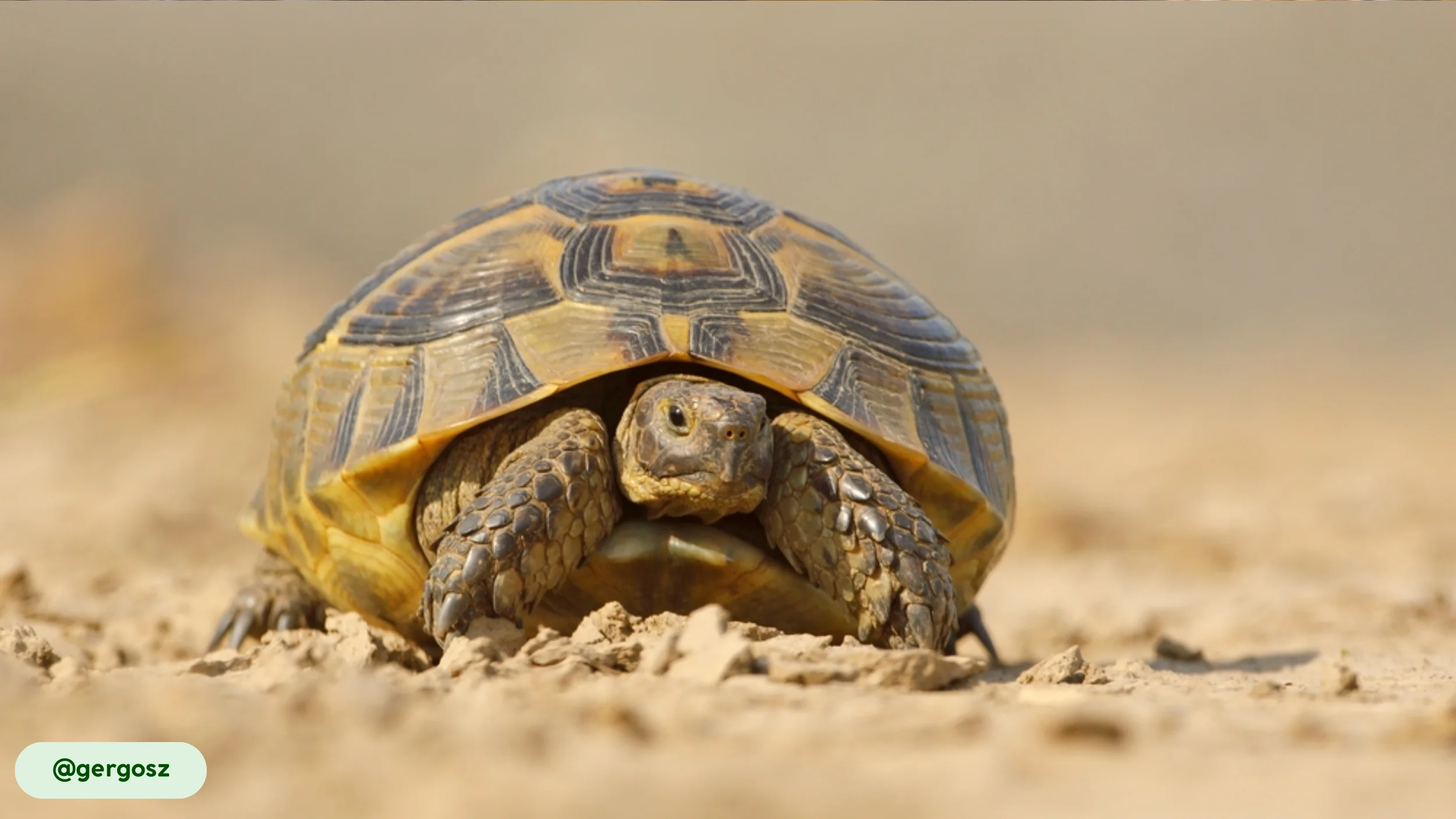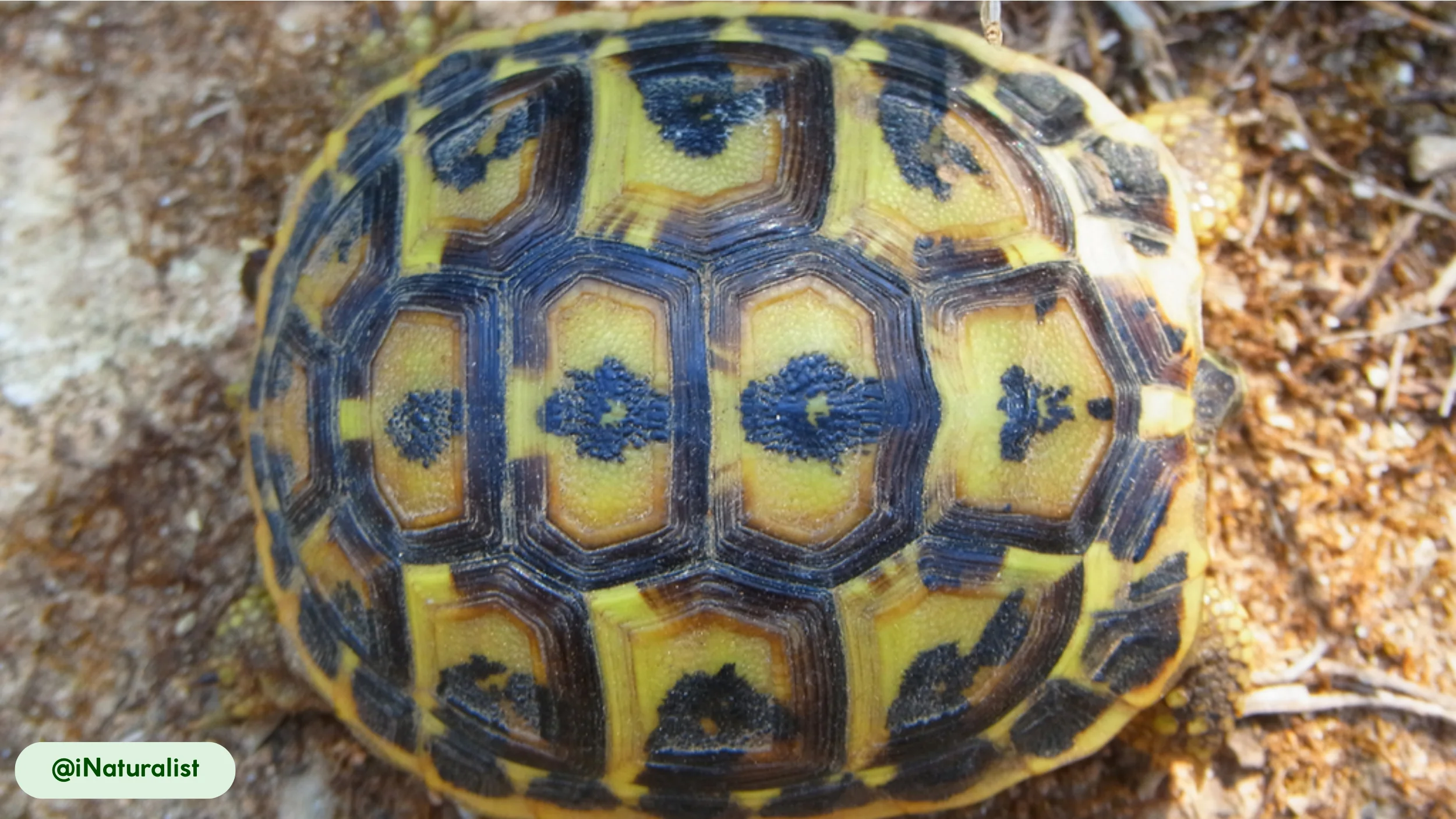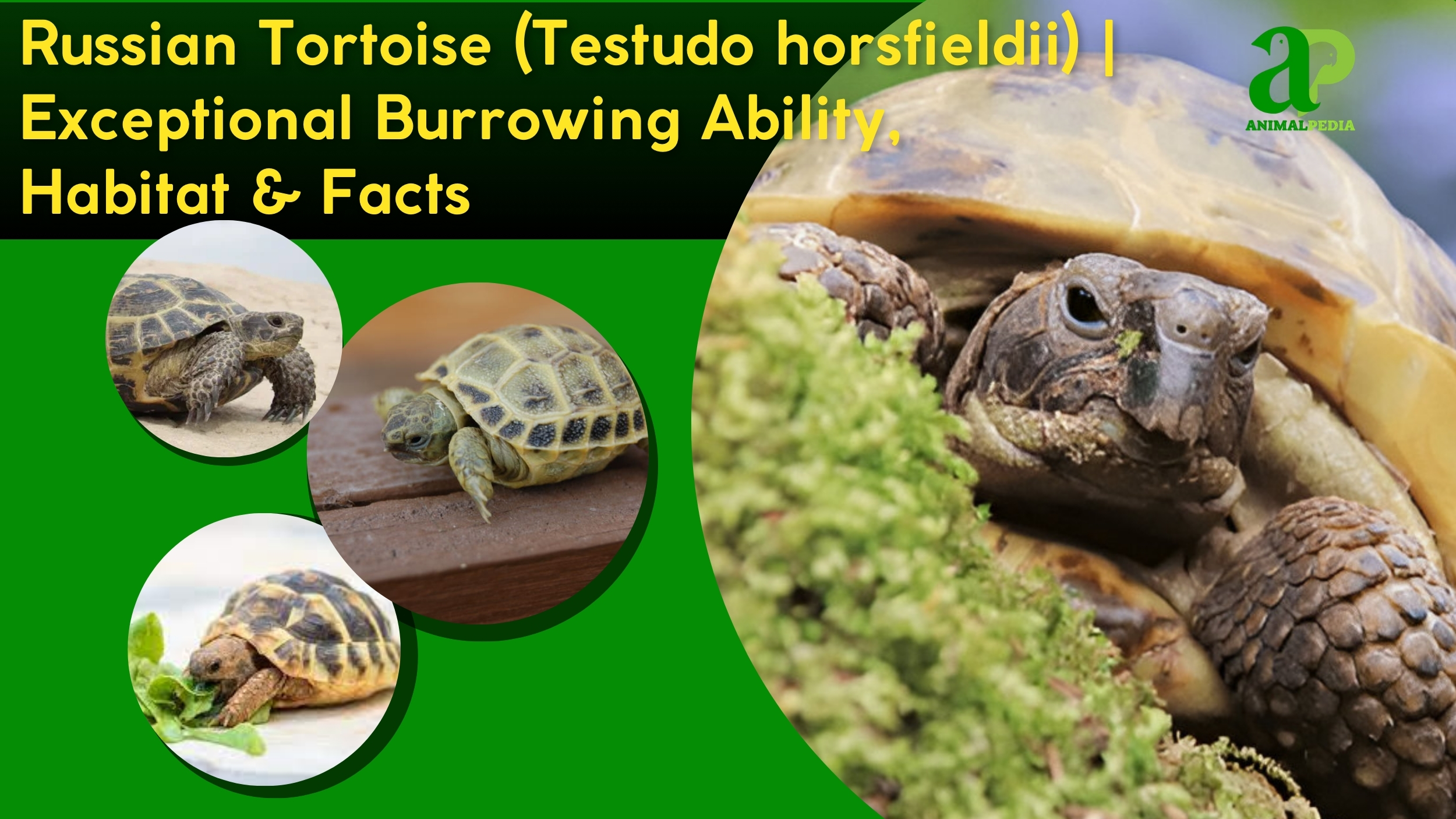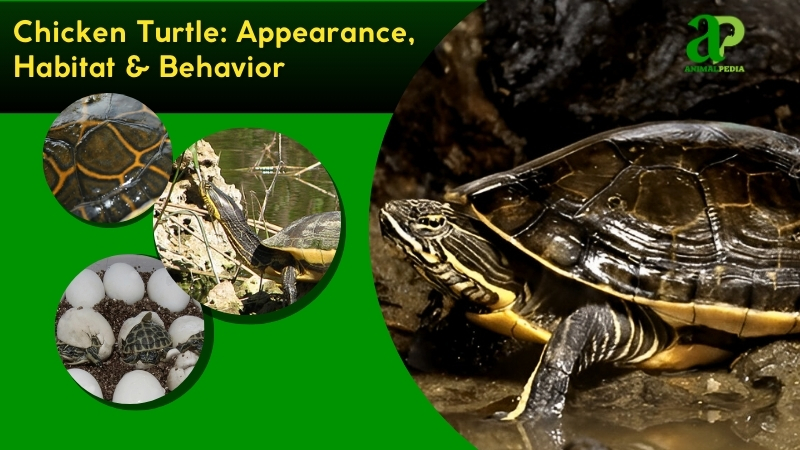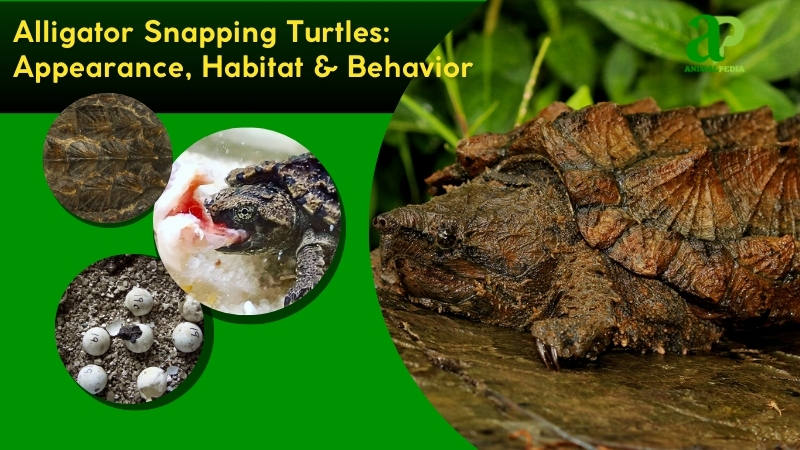Introduction
Hermann’s tortoises (Testudo hermanni) are a land-dwelling species of tortoise known for their domed carapace and docile temperament. These reptiles belong to the family Testudinidae and are part of the order Testudines, which includes all turtles and tortoises. They generally measure between 5.5 and 7.9 inches (14–20 cm) in carapace length and inhabit the diverse landscapes of Southern Europe, from scrublands to evergreen forests. The diet of Hermann’s tortoises consists primarily of plant matter, which they forage for using their sense of smell. Though they are slow-moving, they can navigate a variety of terrains using their sturdy, clawed limbs. The species is currently classified as Near Threatened, facing pressures from habitat loss and the illegal pet trade.
This comprehensive guide will explore the biological definition of Hermann’s tortoises, detailing their physical attributes and behavioral patterns. We will examine their role in their native ecosystems, their interactions with humans, and the conservation efforts protecting them. This information will provide a complete understanding of this remarkable reptile.
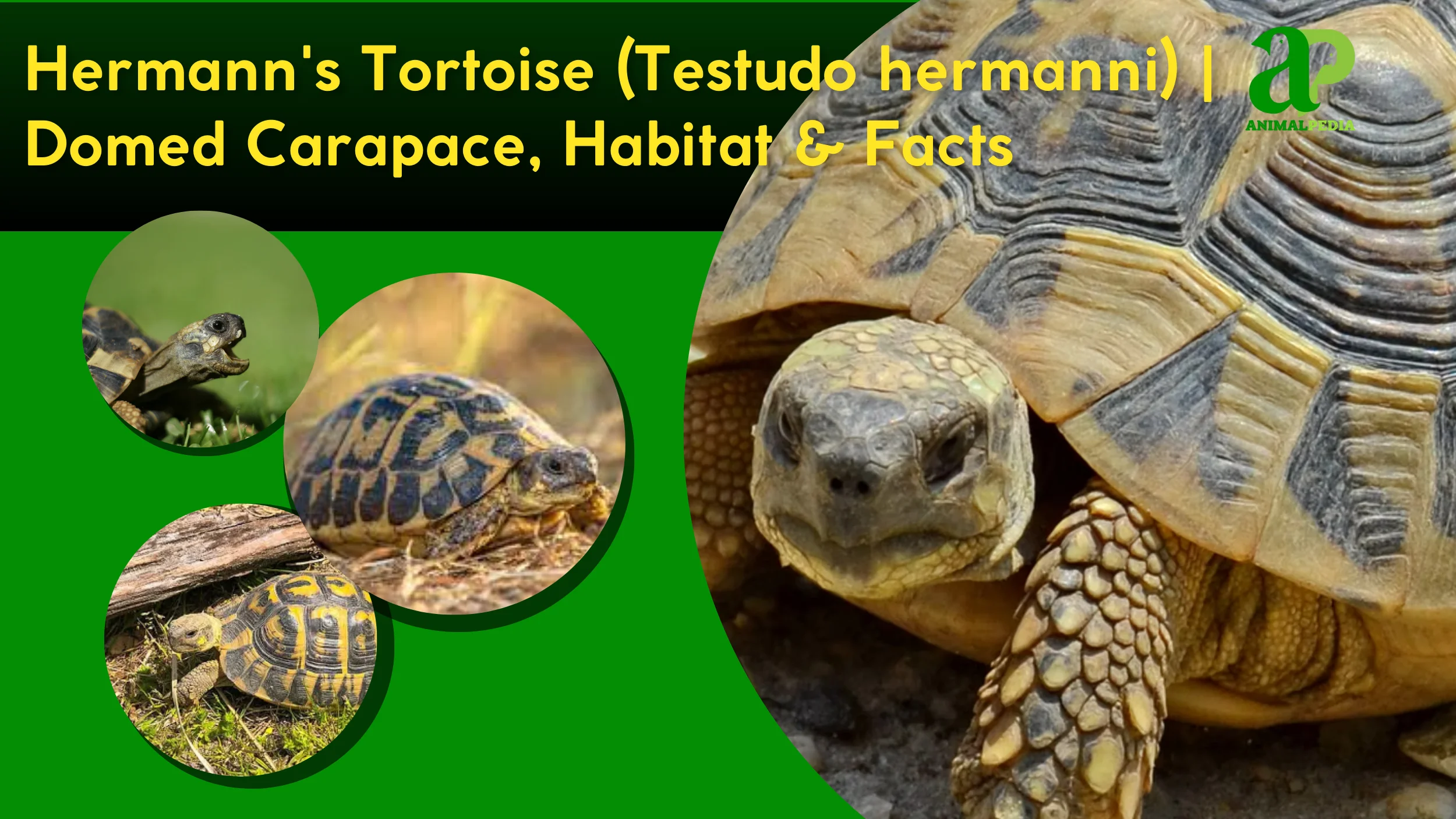
What Are Hermann’s Tortoises?
Hermann’s tortoises are land reptiles, classified as Testudo hermanni, which are native to the Mediterranean and Balkan regions, distinguished by a high, domed shell and a diet of herbaceous plants. There are two subspecies, the Western Hermann’s tortoise (T. h. hermanni) and the Eastern Hermann’s tortoise (T. h. boettgeri), which are genetically distinct [4]. The scientific classification for this species is Testudinidae within the order Testudines and the class Reptilia. Other common names include the Mediterranean tortoise or the Balkan tortoise. The species was first described by the French naturalist Johann Hermann, whose name is honored in its scientific designation. The term “Testudo” itself comes from the Latin word for “tortoise” or “shell,” highlighting their most recognizable protective feature.
While this species is generally recognized as a single entity, a debate exists among some researchers who argue for its reclassification into a different genus, Eurotestudo. This argument is based on mitochondrial DNA divergence from other Testudo species, though this view is not universally accepted [4]. Hermann’s tortoises are a prime example of a terrestrial reptile, with specific adaptations for their life on land. They are not aquatic and have physical traits, such as short, powerful limbs, that facilitate terrestrial movement and burrowing. Understanding their definitive classification is the first step toward appreciating their unique anatomical features.
The definitive classification of a species is the first step toward understanding its physical characteristics. We will now examine the distinctive attributes that define the Hermann’s tortoise, from its protective carapace to its specialized limbs.
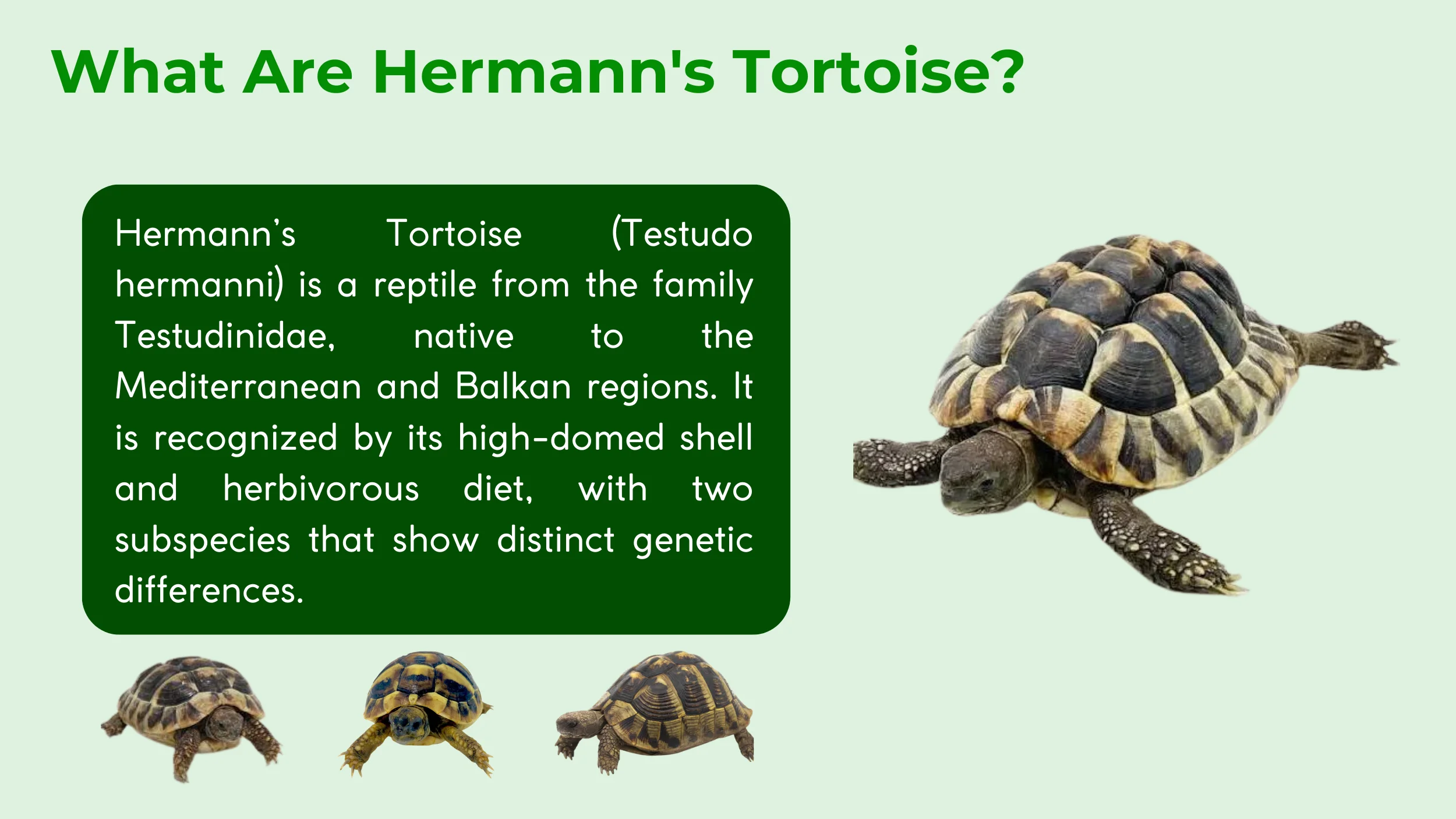
What Do Hermann’s Tortoises Look Like?
The Hermann’s tortoise has a distinctive domed carapace, a feature that provides structural integrity and defense against predators. The shell’s coloration is a mosaic of yellow or olive-green with black patches, creating an irregular pattern that may fade in older individuals, especially in the eastern subspecies (T. h. boettgeri) [6]. The western subspecies (T. h. hermanni) is often noted for having more vivid yellow markings and a more pronounced shell dome [7]. A notable yellow spot behind each eye is a characteristic feature of the western subspecies [3]. The skin, particularly on the limbs, is scaly, which aids in water retention within their dry habitats [6]. The plastron on their underside has two distinct black bands.
Hermann’s tortoises are defined by five key morphological features.
- Domed Carapace: This high, rounded shell serves as the primary defensive structure, allowing the tortoise to retract its head and limbs completely inside for protection.
- Distinctive Plastron: The underside of the shell features a pattern of two solid black bands, a consistent identifier for the species [6].
- Spurred Thighs: A small, horny spur on each thigh, more pronounced in males, is used during courtship rituals [6].
- Keratinized Beak: Instead of teeth, a sharp, horny beak is used to bite and grind plant material [6].
- Clawed Limbs: Their four sturdy limbs are equipped with five-clawed toes, an adaptation for both walking and digging shallow burrows [6].
Sexual dimorphism is evident in physical appearance. Male tortoises have a concave plastron and a longer, thicker tail ending in a horny tip. This curved plastron allows for a more stable position during mating. Females have a flat plastron and a shorter, thinner tail [7]. These traits are important for distinguishing between the sexes.
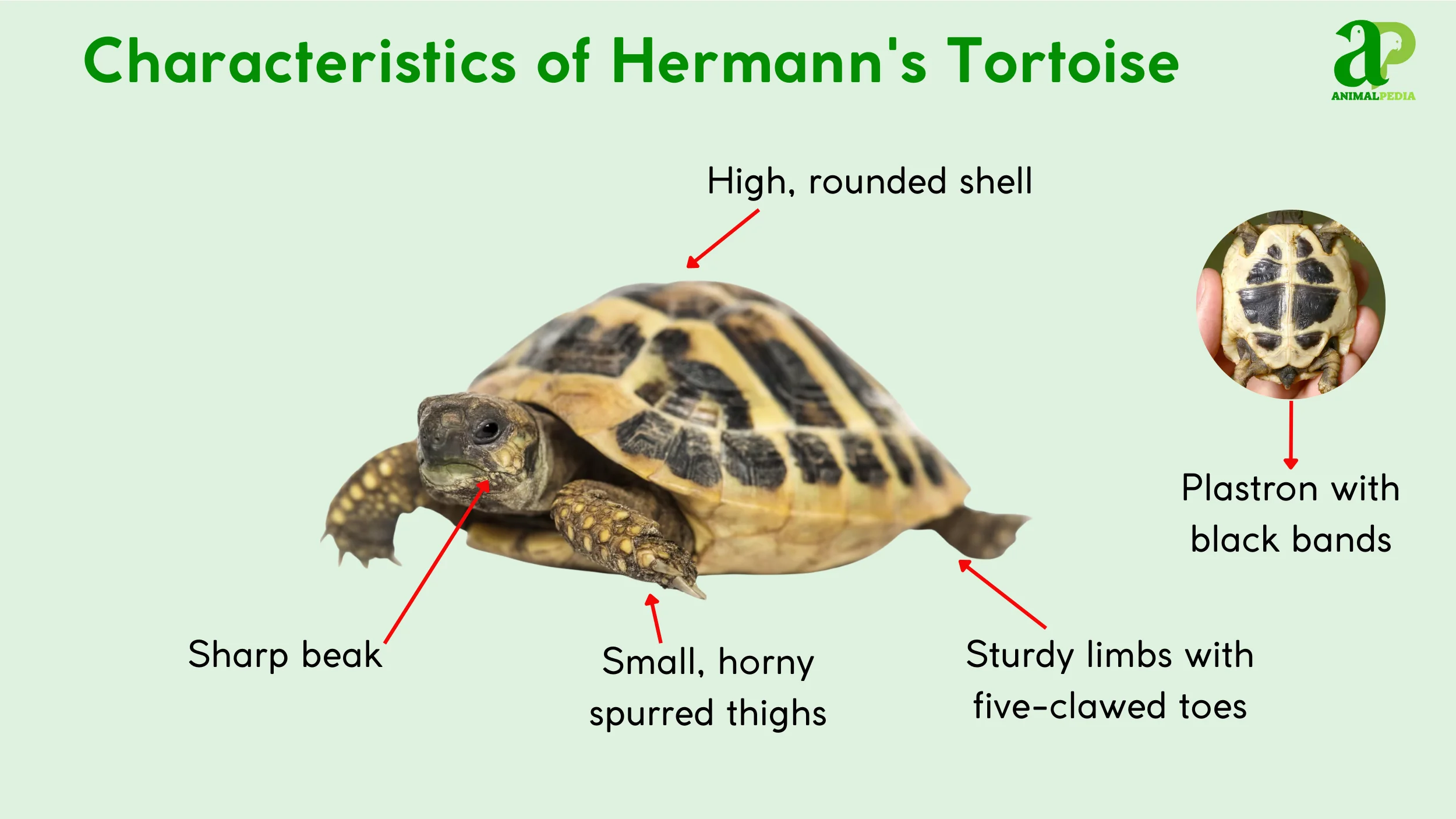
How Big Are Hermann’s Tortoises?
Adult Hermann’s tortoises are small to medium-sized, with an average carapace length ranging from 5.5 to 7.9 inches (14–20 cm) and a body weight between 1.1 and 4.4 lbs (0.5–2 kg) [7]. The western subspecies is generally smaller, rarely exceeding 5.9 inches (15 cm) in length.
| Size Differences | Males | Females |
| Length | 5.5–7.1 in (14–18 cm) | 5.9–7.9 in (15–20 cm) |
| Weight | 1.1–2.2 lbs (0.5–1 kg) | 2.2–4.4 lbs (1–2 kg) |
| Record Size | N/A | N/A |
Hatchlings are small, measuring just 1.2–1.6 inches (3–4 cm) and weighing 0.02–0.04 lbs (10–20 g), making them vulnerable to predators. By two to three years of age, juveniles grow to a size of 2.4–4.7 inches (6–12 cm). Sexual maturity is typically reached around six to eight years when their carapace length is about 4.7 inches (12 cm) [13]. To conceptualize their size, an adult tortoise is comparable to a large grapefruit or a small dinner plate.
The distinct physical features of the Hermann’s tortoise are a result of its natural environment. To understand how they have adapted, we must explore the specific regions and habitats where they thrive.
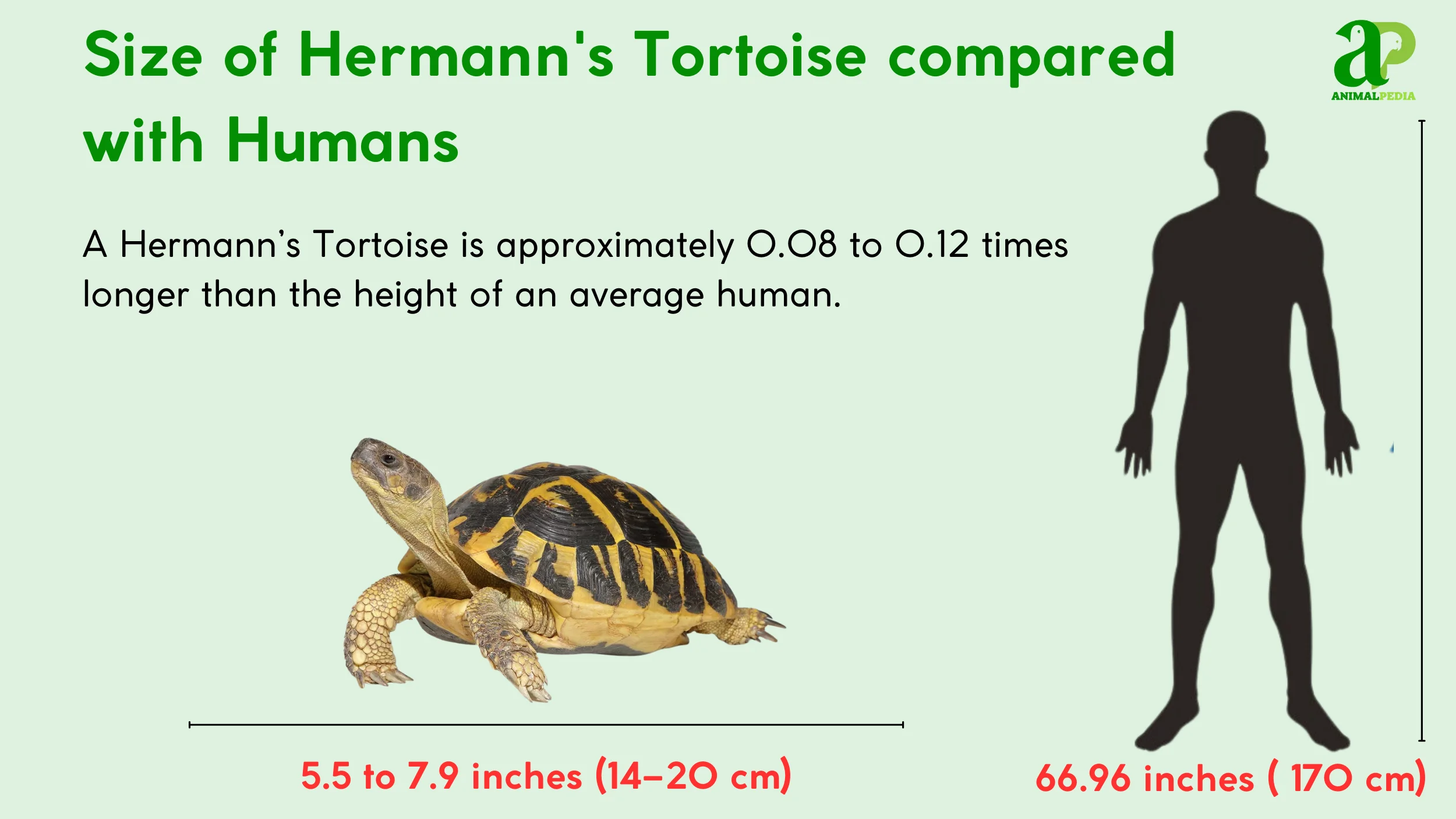
Where Do Hermann’s Tortoises Live?
Hermann’s tortoises are native to Southern Europe, with a wide but fragmented geographic distribution. The Western subspecies, T. h. hermanni, is found in northeast Spain, southern France, and islands in the Western Mediterranean like Corsica and Sardinia. The Eastern subspecies, T. h. boettgeri, occupies the Balkan Peninsula, including countries such as Serbia, Romania, Bulgaria, and Greece [12]. This distribution across the Mediterranean and Balkan regions highlights their adaptation to distinct climates.
Their preferred habitats include evergreen and oak forests, rocky hillsides, scrublands, and open woodlands [6]. They require a climate with warm, dry summers and mild, wet winters, which is characteristic of the Mediterranean basin. Hermann’s tortoises are not highly territorial; they maintain home ranges and follow regular paths, but they defend nesting sites during the breeding season.
Knowing their habitat, we can now look at how these reptiles interact with it. Their behavior, from foraging habits to seasonal patterns, is a testament to their adaptability and survival skills.
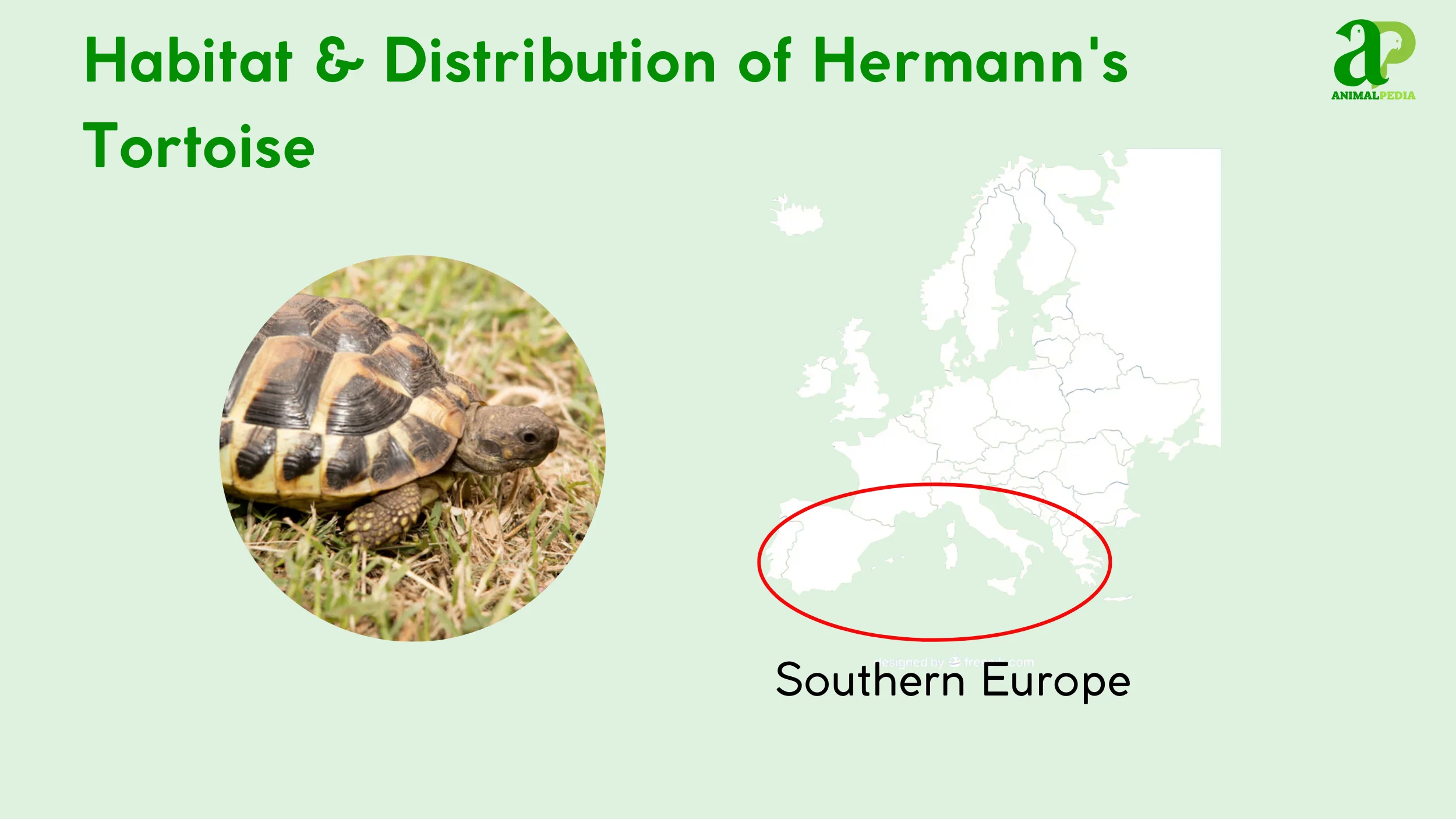
How Do Hermann’s Tortoises Behave?
The behavior of Hermann’s tortoises is characterized by their diurnal activity, herbivorous diet, and a reliance on their shell for defense. These animals exhibit specific patterns of feeding, movement, and seasonal activity that are well-adapted to their native environments.
- Diet and Feeding: As a herbivorous species, they forage for grasses, leaves, and flowers in their habitats, using a specialized beak for consumption.
- Movement and Abilities: They are slow-moving land dwellers, relying on steady terrestrial walking and digging abilities to navigate their environments and create burrows.
- Daily/Seasonal Patterns: These tortoises are most active during the day, particularly in the morning and late afternoon, and enter a state of dormancy during winter.
The following sections will explore these behavioral aspects in more detail, beginning with their dietary habits.
Diet and Feeding
Hermann’s tortoises are herbivores, consuming a wide variety of plants available in their native habitats [10]. Their diet consists primarily of leafy greens and flowers, including dandelions, clover, and plantain [6]. They forage for their food by moving methodically through their environment, using a keen sense of smell to locate suitable plant matter. As they lack teeth, they rely on a powerful, keratinized beak to bite and shear off pieces of vegetation. Hermann’s tortoises are known to consume a large volume of plant material relative to their body size, reflecting their low-energy lifestyle.
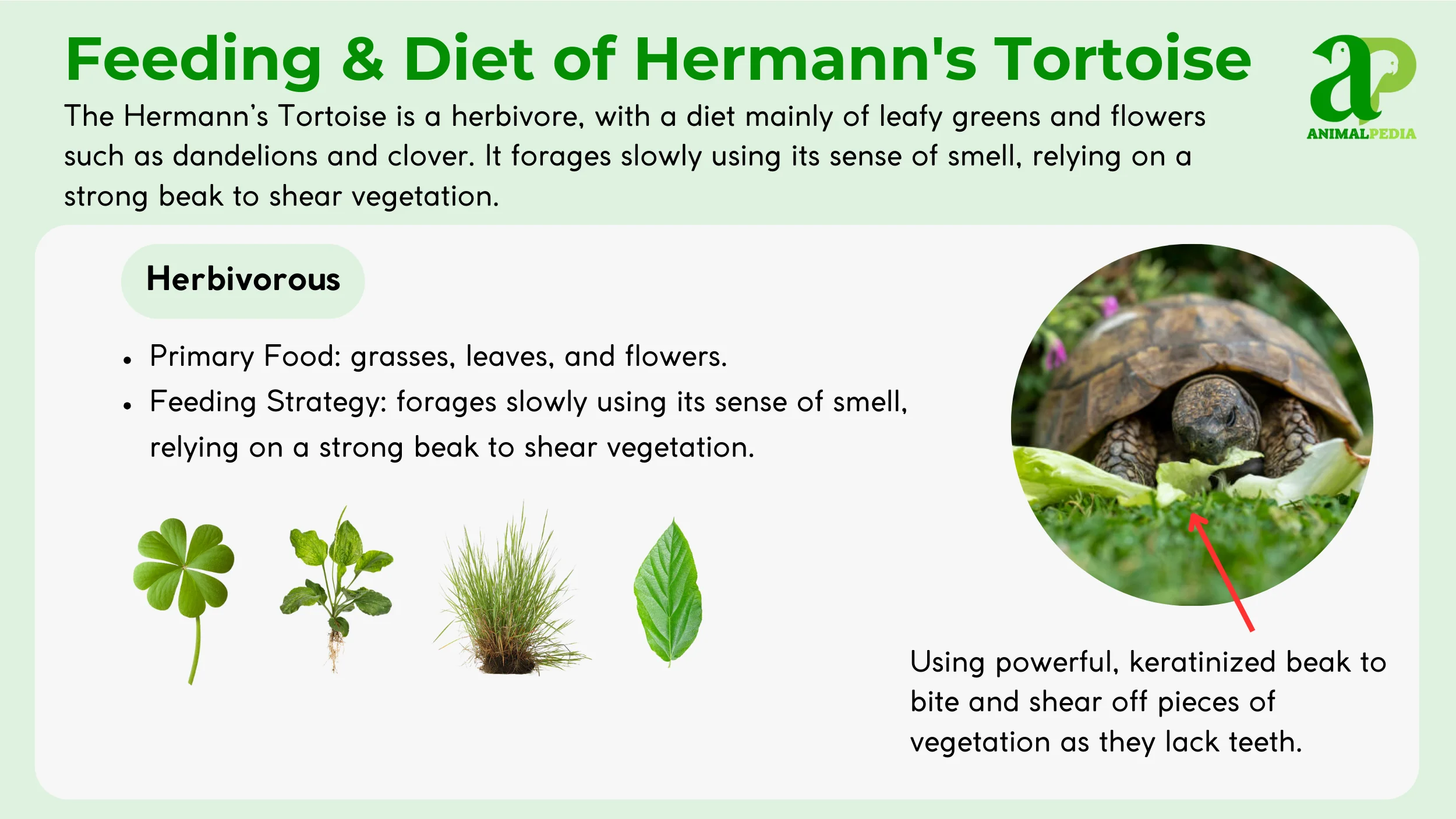
Movement and Abilities
Hermann’s tortoises move through their terrestrial environments with a steady, purposeful gait, relying on their sturdy limbs. They are not swift animals but are highly efficient in their movements. Their primary modes of locomotion are walking and digging [6].
- Walking: They use a slow, steady terrestrial walk, with their strong legs supporting their heavy shells. This form of movement is ideal for a herbivorous lifestyle, allowing them to conserve energy while foraging.
- Digging: Their clawed feet are adept at digging, which they use to create shallow burrows for shelter from extreme temperatures and predators [6].
The maximum speed of a Hermann’s tortoise is approximately 0.2–0.4 mph (0.3–0.6 km/h) for brief periods [9]. Their physical capabilities are optimized for survival rather than speed. They have powerful limbs for digging and navigating uneven terrain, and their strong, domed shell provides significant protection. They also possess a well-developed sense of smell for locating food and a long lifespan, which are key adaptations for their survival.
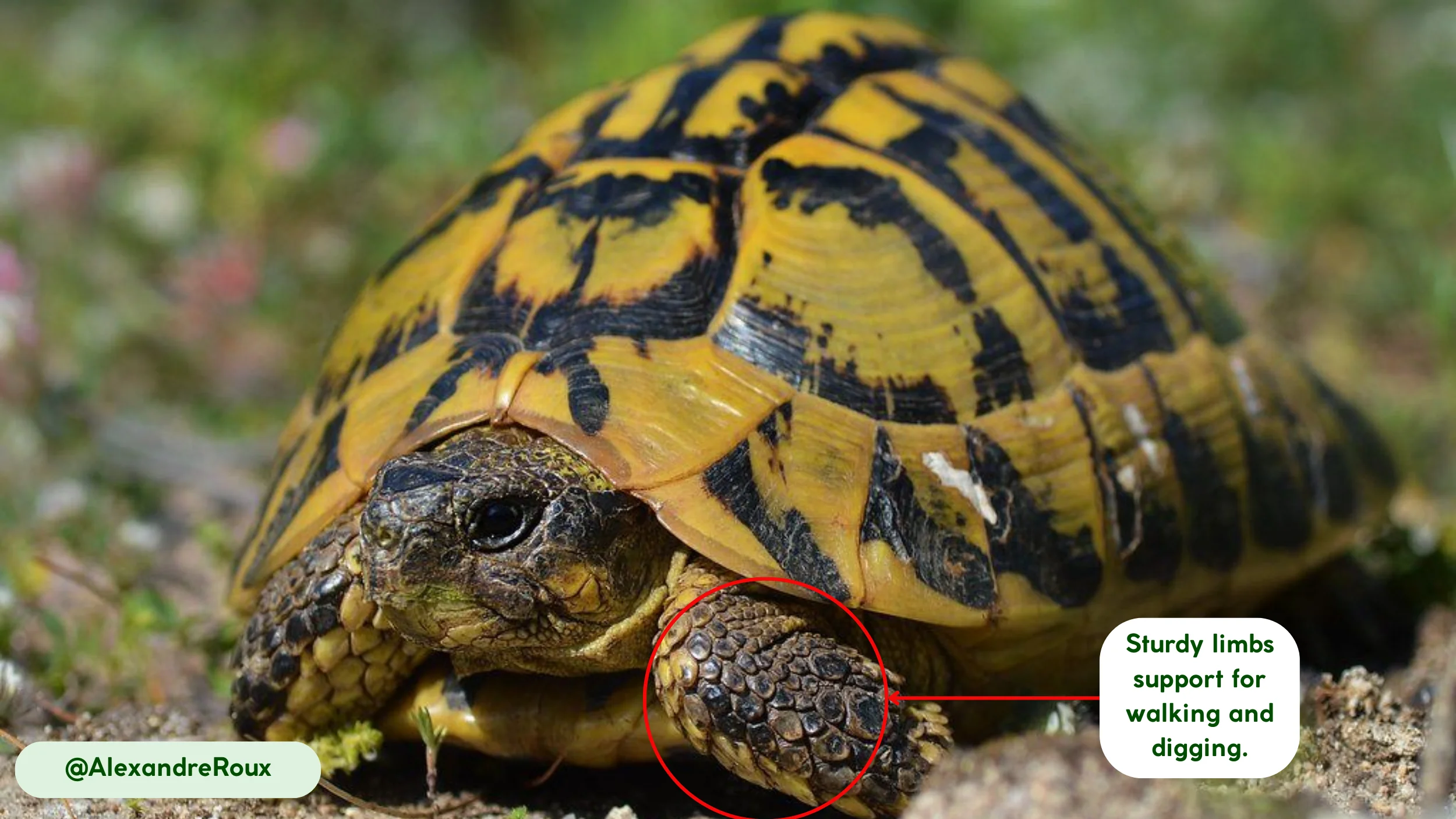
Daily/Seasonal Patterns
Hermann’s tortoises are diurnal, meaning they are active during the day. Their daily routine is closely tied to ambient temperatures and light levels. During the summer, their activity typically begins in the early morning as the sun warms the air [11].
- Morning (7 AM – 11 AM): They emerge from their shelters to bask in the sun, raising their body temperature to a level suitable for activity.
- Mid-day (11 AM – 3 PM): As temperatures rise, they seek shade and shelter to avoid overheating, often resting in burrows or under vegetation.
- Late Afternoon (3 PM – 6 PM): They become active again as temperatures cool, primarily for foraging.
- Evening (6 PM onwards): They return to their burrows or shelters for the night to rest and maintain a stable body temperature.
This species is most active during the spring and fall months, when temperatures are moderate. In summer, they become less active during the hottest parts of the day and may enter a state of aestivation, a form of summer dormancy, to avoid heat stress [11]. Their most notable seasonal pattern is hibernation. During the winter, when temperatures drop and food becomes scarce, Hermann’s tortoises dig into the soil or find sheltered spots to hibernate [5]. This dormant period helps them survive cold temperatures and limited resources, a critical adaptation for their survival.
Having explored their daily routines and behaviors, a complete picture includes their life cycle. Reproduction is a key aspect of their existence, ensuring the continuation of their species.
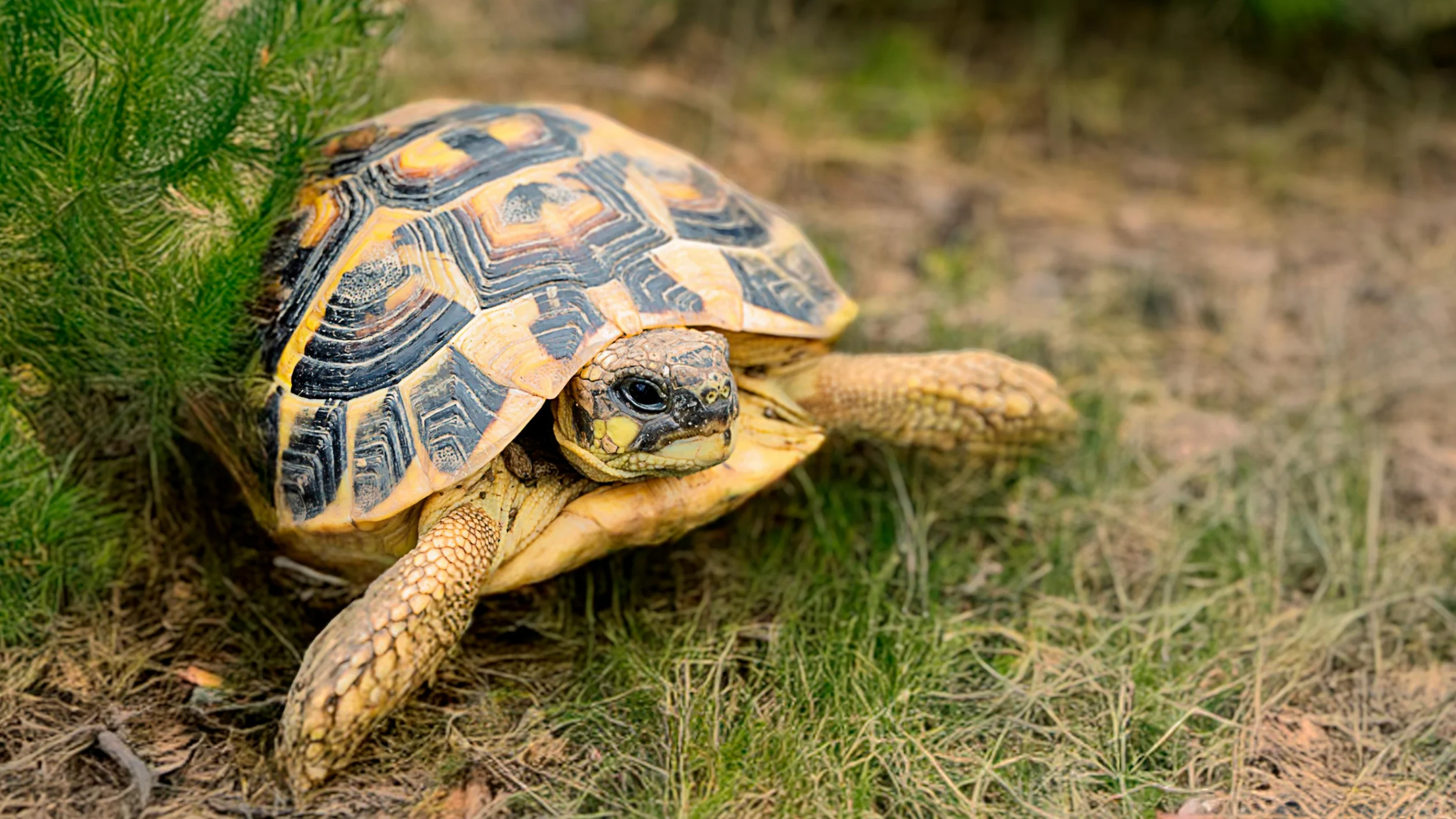
How Do Hermann’s Tortoises Reproduce?
Hermann’s tortoises are oviparous, reproducing by laying eggs. Mating season occurs during spring and early summer [1]. Courtship rituals involve males using head-bobbing and shell-ramming to subdue females. After mating, the female digs a nest in soft soil using her hind legs [1]. She deposits between 1 and 12 eggs, typically in a single clutch. The eggs incubate for 60 to 90 days. The sex of the hatchlings is determined by the temperature of the nest, a process known as temperature-dependent sex determination (TSD). Cooler temperatures tend to produce males, while warmer temperatures produce females [1]. Parental care is limited to nesting; once the eggs are laid, the female provides no further attention.
The journey of a Hermann’s tortoise from a temperature-dependent egg to a mature adult is a long one. This section will explore the remarkable longevity of these animals and the factors that influence their lifespan.
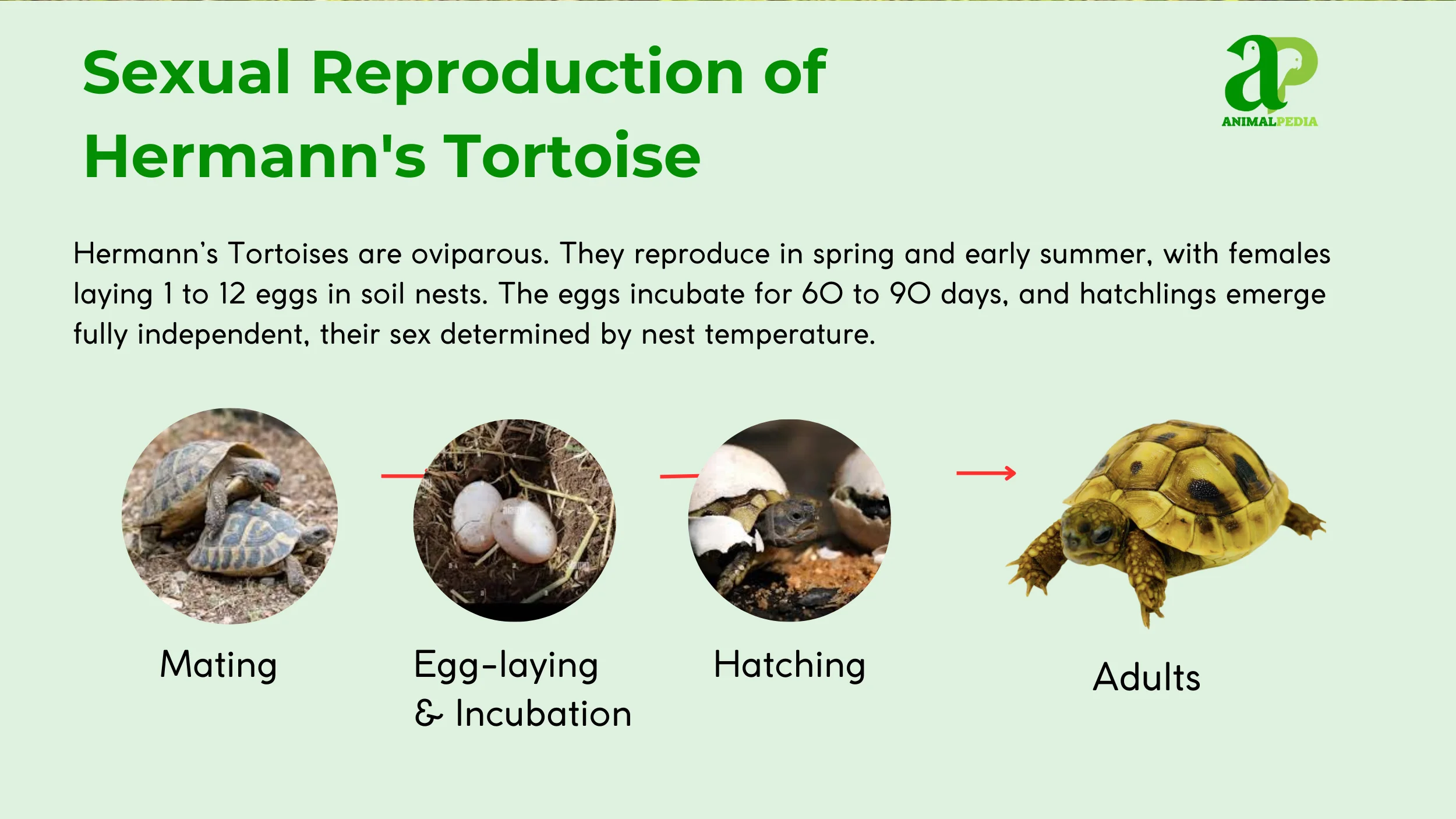
How Long Do Hermann’s Tortoises Live?
Hermann’s tortoises have a long lifespan, living an average of 30 to 50 years in the wild, with many reaching well over 90 years in captivity [2]. They reach sexual maturity at approximately 6 to 8 years of age when their shell length is about 4.7 inches (12 cm) [13]. Longevity is influenced by several factors. In the wild, threats such as predation from foxes and birds, disease, and habitat destruction limit their lifespan. Tortoises in captivity often live longer due to a lack of predators, consistent food sources, and veterinary care.
Their impressive lifespan is a trait that allows for long-term interactions with their environment, including humans. We now consider the ways in which these tortoises have a positive relationship with people.
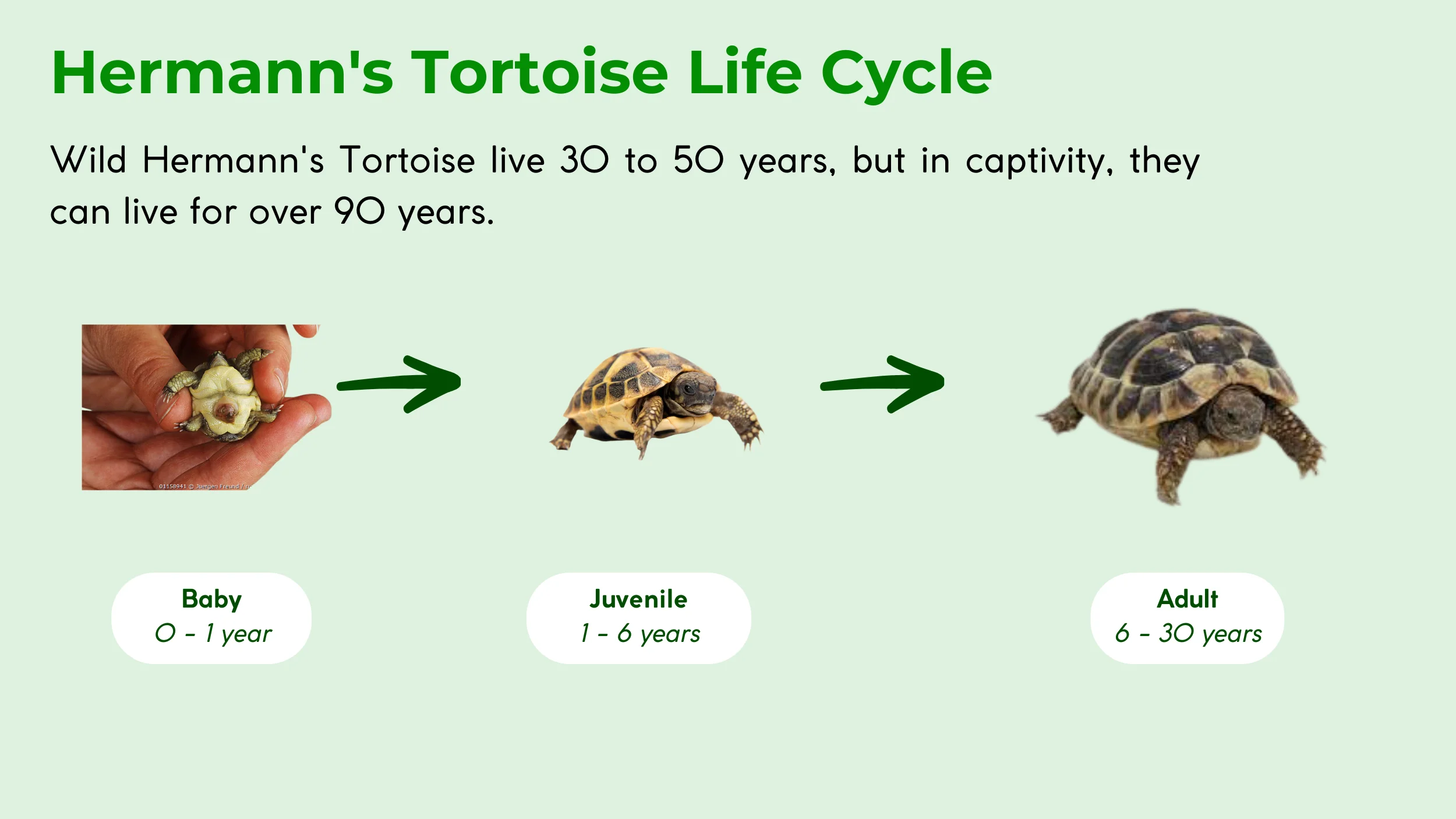
Are Hermann’s Tortoises Beneficial to Humans?
Hermann’s tortoises are beneficial to humans primarily as a popular pet and for their ecological value. They are one of the most widely kept pet tortoises globally due to their manageable size and docile nature [3]. The pet trade, when conducted through legal and regulated channels, provides economic benefits and promotes public interest in reptile conservation. Ecologically, these tortoises contribute to their native ecosystems as seed dispersers. By consuming plant matter and depositing seeds in their feces, they help propagate plant species, which maintains the health and diversity of their habitats. This indirect ecological service supports the broader ecosystem.
While they offer benefits to humans and ecosystems, their existence faces threats. The next section will address their conservation status and the challenges they face in the wild.
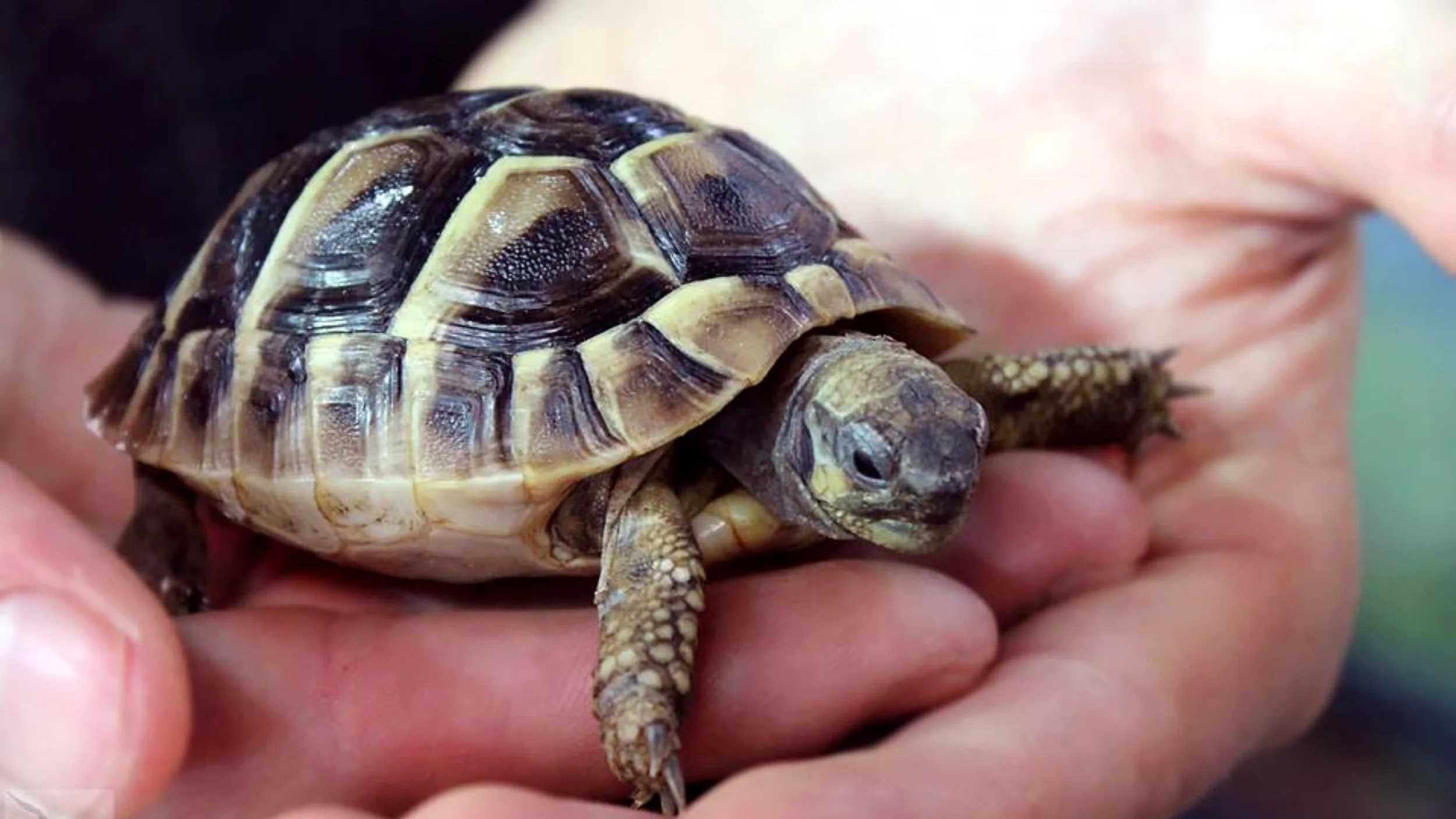
Are Hermann’s Tortoises Endangered?
Hermann’s tortoises are not classified as endangered but are considered Near Threatened by the International Union for Conservation of Nature (IUCN) [8]. This status indicates that the species is likely to become threatened with extinction in the near future if conservation measures are not maintained. The primary threats to their survival are habitat loss and fragmentation due to urbanization, agriculture, and wildfires [12]. Collection for the illegal pet trade is a significant pressure on wild populations [8]. Conservation efforts focus on protecting their natural habitats and controlling illegal collection. Educating the public on responsible pet ownership and supporting legal breeding programs can help reduce the pressure on wild populations.
Understanding their conservation status highlights their vulnerability, but their history and unique traits are a source of wonder. We will now uncover some lesser-known, intriguing facts about these reptiles.
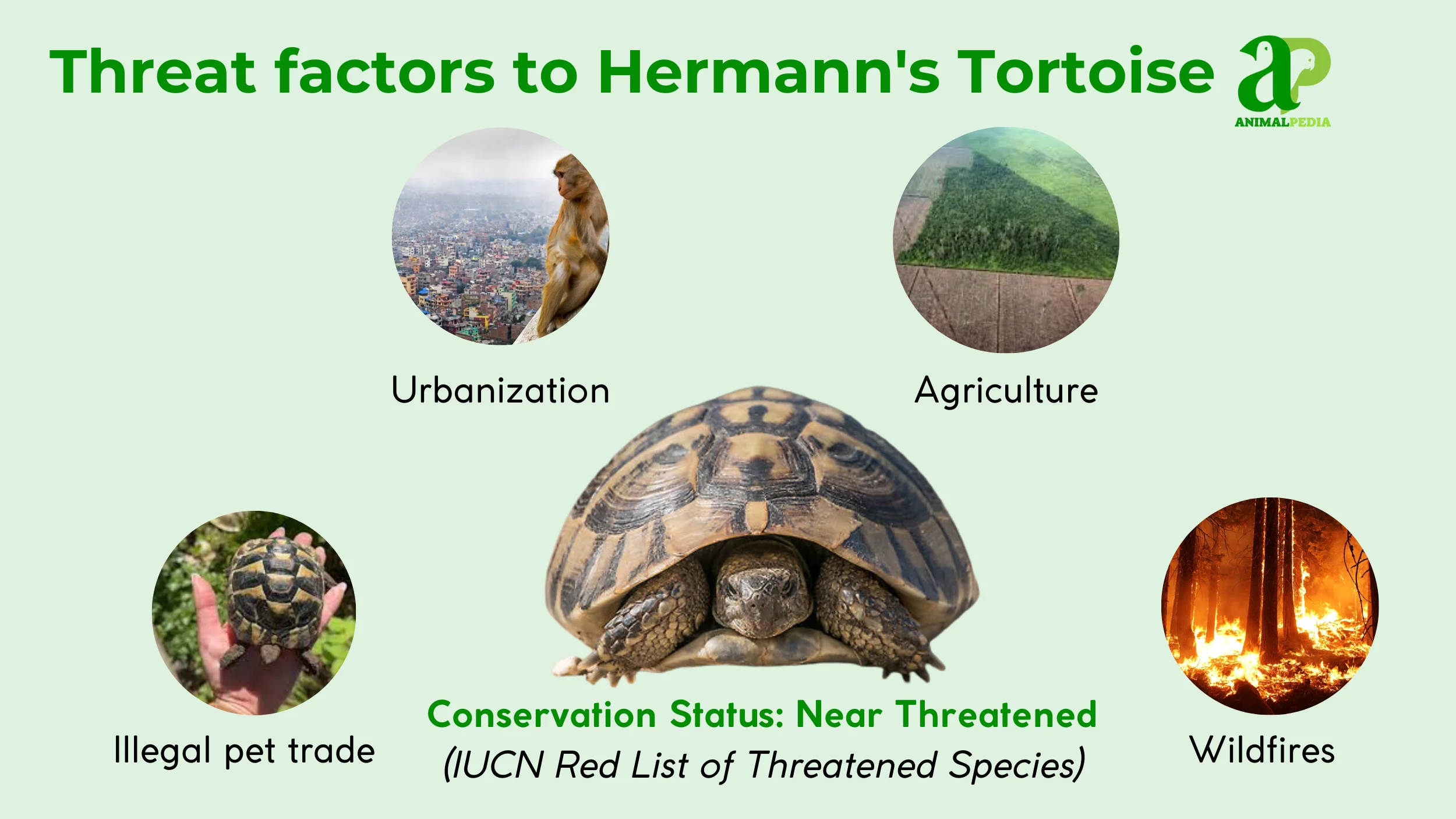
Frequently Asked Questions About Hermann’s Tortoises
Is Hermann’s Tortoise A Good Pet?
Hermann’s tortoises are suitable pets for those with knowledge of their specialized needs. They require a specific diet and a controlled habitat with appropriate temperature, light, and humidity to thrive. Providing the correct environment is essential for their long-term health.
Does A Hermann Tortoise Bite Hurt?
A Hermann’s tortoise bite can cause a pinch but is not typically dangerous. They do not have teeth. They use a strong, keratinized beak for tearing plant material. Their bite is not venomous, and they only bite defensively or to test items in their environment.
How Long Until A Hermann Tortoise Is Fully Grown?
Hermann’s tortoises are not fully grown until they reach 10 to 12 years of age, though their growth rate varies. They reach sexual maturity much earlier, usually between 6 and 8 years of age. Factors like diet, habitat, and genetics influence their final size.
Do Hermann Tortoises Bond With Humans?
Tortoises do not form emotional bonds with humans in the same way mammals do. They can become accustomed to human presence and may recognize their owner as a consistent source of food. This is a learned association, not an emotional connection.
How Smart Are Hermann Tortoises?
Hermann’s tortoises have limited cognitive abilities. They can learn through classical conditioning and remember specific routines. Their intelligence is focused on survival, such as recognizing food sources and remembering safe places in their habitat.
Conclusion
Hermann’s tortoises are a fascinating subject, from their intricate shell patterns and distinct subspecies to their specific behaviors and role in their ecosystems. They represent a species with ancient origins, remarkable longevity, and a fragile conservation status that depends on responsible human interaction. The details provided here showcase their resilience and complex biology. For more expert-driven content and a deeper exploration of Earth’s diverse fauna, visit Animal Pedia and continue your quest for knowledge.

